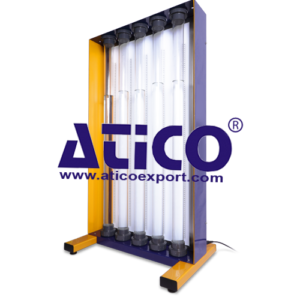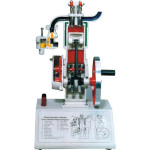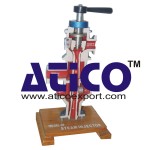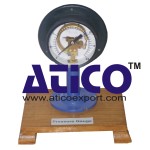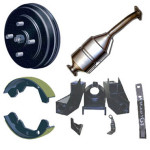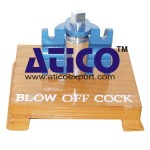Description:
Sedimentation is a process used widely in the clarification of water and waste water. Particles settle from suspension in different ways, depending on the concentration of the suspension and the characteristics of the particles. The simplest type of sedimentation is the settling of a dilute suspension of particles that have little or no tendency to flocculate. In these circumstances, the prediction of clarification rates and their scaleup to plant design is relatively straightforward.
For higher concentrations where inter-particle effects become significant and where agglomeration may take place, different regimes of settling rate occur, known as ‘zone’ settling. Information from batch tests for such systems forms a vital part of the search for the optimum design and operation of industrial sedimentation tanks. Five equal-sized glass cylinders are mounted vertically on a backboard incorporating measuring scales. Each of the cylinders may be removed from the board for washing, filling and mixing of the solid particles. Suspensions containing different sediments can be placed in the cylinders and the differences in sedimentation rate observed by measuring the changes in height of the various solid/liquid interfaces with respect to time.
Demonstration Capabilities
- Effect of initial concentration on sedimentation rates
- Construction of settling-rate curves from a single batch test
- Effect of initial suspension height on sedimentation rates
- Effect of particle size distribution
- Use of flocculating additives
Specification
- Five graduated, 1m long x 51mm bore glass cylinders mounted vertically on a backboard
- Cylinders are illuminated from behind and removable for cleaning
- Supply includes stop clock, three 2l plastic beakers and a specific gravity bottle

